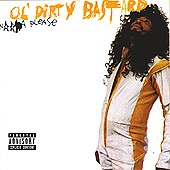
These two pieces of music are patently different in aesthetic quality, eloquent vs. rough, in their extreme contrast of speech, the former poem romanticizes the female as almost a goddess while the latter as an animal and object, a lewd description. In the same, the earlier work radiates a genuine, almost palpable feeling while the recent work is almost fabricated and carries no such connection.
Both poems are similar in that they carry an emotional overtone of sexual innuendo and a female is at the heart of both works. Both provide to sympathetic audiences, general vs. specific, as the first is broad while the second is specifically addressed to the female.
Other avenues of expression that were open to African American composers at the time were few, if any. Theatrical displays were usually limited to whites. The censure of African-American expression was at the fore of race relations. One other mean of expression available to blacks was the individual and often private recital of “church hyms”. These songs have long been a demonstrable trademark of African-American culture.
In these two songs, what is interesting is the fact that both reflect cultural stereotypes but oddly and unusually the representations are of the opposite periods of time when they were composed. Ol’ Dirty Bastard’s recent song reflects those notions promoted by the majority in the days of segregation. These notions found blacks as inhumane, vulgar, lewd and immoral. Strangely enough, the opposite notion of African-Americans as equals, a notion adopted by most today, is reflected in the earlier work. In each time period, artists incessantly strive to become something others do not want them to be: the accordance of freedom or the attribution of immoral values.
African-American portrayals in music indisputably reflect cultural stereotypes today as they have for hundreds of years. Crime, sex, drugs and violence are all pervasive in African-American pop music today. It is not coincidence that these are areas where the prevalence is high among the African-American demographic. African-Americans have long expressed their injustices and problems through their music and other media just as whites have. The media serves as an invaluable asset for anyone to bring attention to the issues that affect them the most. Today, music is distributed through the media and censorship is no longer a problem as it was decades ago. The censorship of material produced by blacks can no longer be taken “off of the agenda” as it once was.
It would be unfair to say that I do not hold any biases or stereotypes because I feel that all of us do in one way or another, even subconsciously. However, it is my duty and only what is right, to remind myself of the importance of impartiality. History allows us to see how history is made in retrospect and provides a clear landscape to survey the terrain. In the context of history, I could be bias against early African-American expression as being irrelevant due to the censure so obvious in society at the time or I could be bias to African-American music today as being fake just to sell records: “sex sells”.